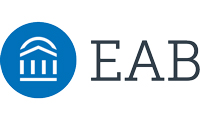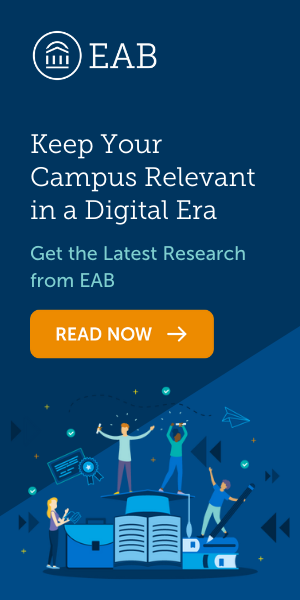As universities look to a post-pandemic future, they must not only decide what the role of remote learning tools will be, but also whether curricula remain fit for purpose
The higher education sector has been impacted greatly over the past 12 to 18 months. With pandemic restrictions easing in many markets, decisions will have to be made regarding the efficacy of remote and hybrid pedagogical initiatives. At the same time, universities must grapple with a rapidly evolving job market and the new skills that employers demand of their graduates.
At a webinar hosted by Times Higher Education in partnership with EAB, a best practices firm that uses research, technology and consulting to address challenges in the education sector, the panel explored how higher education is transitioning to new working arrangements on campuses to prepare for a post-pandemic future.
Michael Fischer, director of research advisory services at EAB, explained that while remote working has been essential during the pandemic, future policies are likely to involve more of a hybrid approach. “While we are transitioning to new workplace arrangements, having people present on campus is going to be a critical part of our future,” he said. “We expect only very few departments – largely IT and some financial departments – to go fully remote. But benefits are certainly available through the continued adoption of remote working policies, and this is likely to lead to a revisioning of how we utilise our spaces on campus.”
“We've generally seen five major drivers for moving to a new remote work policy,” Fischer continued. “One is around retention, the second concerns recruitment and the third is finding space savings. The fourth and fifth drivers are around diversity and cost savings respectively.”
Colin Koproske, managing director at EAB, was keen to point out that some universities in the US have already stated that they will not be doing any remote work after the pandemic has subsided. “We've seen this most clearly from rural, private institutions that perhaps feel as though they are not necessarily competing for talent in large metropolitan areas and that their value comes from cultivating the impression of a tight-knit community in a small town. Those universities feel that they are as much a physical place as a virtual knowledge enterprise.”
“Generally, when we talk to heads of HR about trying to implement new remote working policies, what we’re hearing is that they’re trying to find a solid middle ground,” Fischer said. “On the one hand, remote work was very limited before the pandemic. However, during the pandemic, it was often very fragmented. Now, they want to make sure that meetings can benefit both their virtual and in-person employees equally.”
Remote working also comes with challenges. “We need to think about employee well-being when implementing remote working policies,” Fischer commented. “Is our remote work environment going to be beneficial for our employees or are we actually going to put them under additional strain? We also need to think about equity challenges and what we want to achieve through remote working.”
Koproske examined the role that universities play in educating future workers. “The World Economic Forum talks a lot about the significant number of employment categories that will need reskilling by 2025. This is a challenge as we design our curricula; how do we give young people the critical and dynamic thinking skills they need? Plus, it’s not only about what happens on campus. Ultimately, it’s about delivering a holistic experience that will transform a graduate into a productive citizen and a lifelong learner.”
Watch the webinar on demand above or on EAB’s YouTube channel.
Find out more about EAB.








